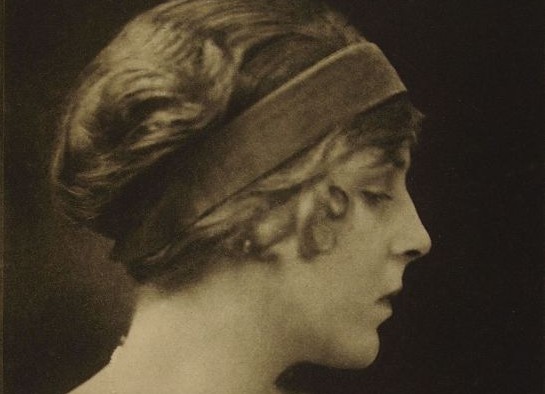Post
JOURNAL 2021: From the Archives
7 Jun 2021
Mark Prizeman looks back to the 1920s and some key women’s contributions to the Society
This article is taken from the 2021 edition of the Journal of the London Society. You can find out more about this year's Journal here. Or join the Society for just £10 and receive a free copy.
A ‘hectograph’ list of the candidates for the committee of the London Society in 1920 identifies the first two women to stand. ‘Lady Cooper’ is shuffled in with all the Lords, Sirs and Esquires whilst Miss M M Jeffrey sits alone at the bottom betwixt the two columns. As a note to archivists; this is not the familiar meth-smelling, ‘roneo’ - a process invented three years later, but a ‘jellograph’ similar to that used to forge documents in WWII POW camps.
Lady Diana Cooper (pictured, above) was a much-adored social linchpin who would prove very useful in rallying admirers to the cause of the Society. She would not remain on the committee long as after becoming an actress at the age of 30, she went on an extended theatrical tour of the United States. Both her son, John Julius Norwich and grand-daughter Artemis Cooper became renowned authors and their respective collections of her considerable letter-writing illuminate her life.
Maude M Jeffrey was secretary to the magnificent social philanthropist Octavia Hill (read Gillian Darley’s biography). Maude was recruited into the Women’s Pioneer Housing Group in 1917 for her experience in housing management gained with Hill and she would provide a very useful insight into the new ways of thinking about the impending inter- war obsession with providing better houses for everyone. Houses by the 20th century had ceased to become places of work and become homes which with little precedent had to be invented from the ground up: domestic identity and social reception spaces all orchestrated by the home maker. With 1.3 million more women in the population than men in 1920, further focus was added to the views and requirements of designing for a modern life.
This year marks the centenary of the Society’s most seminal publication - London of the Future. Comprised of 18 separately authored, specialist chapters on an extensive range of the Society’s concerns - road provision, housing provision, open spaces, railway re-organisation and proposals for how the Society wished to improve various components of London including the Green Belt (a phrase coined by Octavia Hill), the South Bank (with the committee’s internal obsession in replacing Charing Cross Bridge) and smoke pollution, along with discourses on the docks, the Channel Tunnel and discourse on ‘the sense of place’.
The title is available on ‘Print on demand’ or a genuine copy pops up from time to time on Abebooks.co.uk. While many contributions are succinct and to the point, some have eventually come to pass such as the clean air acts of 1956 and a few are now quaint with age - such as glassing over Marylebone to create an aerodrome. The curated contributions nevertheless create a collective sense of excited engagement of how it is possible to think positively of the future of a large multilayered, contradictory and invigorating city beyond the distractions of mere gossip or self-serving interests.
Mark Prizeman is an architect and a trustee of The London Society
